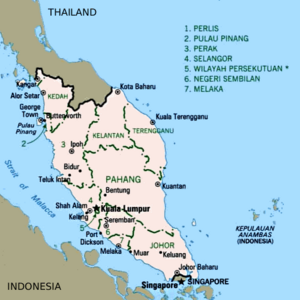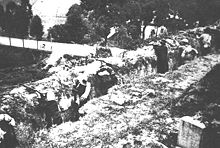On the following day the battle of Jitra commenced. In the morning, the Japanese launch a battle to seize Jitra, rushing tank and artillery reinforcements down from Singora. In the late afternoon a sudden Japanese tank charge into British defences north of the town swamps the 1/14th Punjab Regiment and the 2/1st Gurkha Rifles. British troops in Jitra are ordered to retreat south of the township and overnight the British frontline undertakes a ten mile withdrawal. After a 15 hour battle, the Japanese 5th Division capture Jitra and with it a large number of British weapons and vehicles in the area. Japanese planes conduct the first major air raid on Penang. After the destruction of most of the British planes in north Malaya, Malaya Command strategists order that British fighter aircraft will, until reinforcements arrive, only be used in the defence of Singapore bases and for the protection of supply convoys moving north into Malaya.
At dawn, the 6th and 15th Brigades of the Indian 11th Division go into Siam to meet the Japanese advance from Singora. Further east, another Indian force crosses from Kroh to block the Japanese advance from Patani. The next day Malaya Command issues orders for Indian 8th Brigade troops to withdraw from the Kota Bahru area. Under a plan prepared by Lt-Gen. Arthur E. Percival the troops were to begin a retreat south down the rail-line with strong rearguard actions, while vital supplies and equipment were extracted south from Kuala Krai. The 3/16 Punjab Regiment comes under heavy attack from the Japanese at Kroh. Eighty-five Japanese dive-bombers direct massive air raids on Penang.
British troops at the north-western frontline are in full retreat south of Jitra. By December 13 and on December 14 the Japanese enter from the north and take the Alor Star airfield ( left unprotected because of the assumed strength of the Jitra line). The invading troops find the airfield virtually intact. By midday the Japanese begin flying their aircraft in from Singora and Patani. At around 3pm the Japanese attack the Gurun position and in the evening the British withdraw to behind the Muda river. Britain's Far East War Council realise that Penang can only be held for another three or four days and make the decision to abandon it.
Yamashita moves his headquarters to Alor Star on December 15 and the Japanese bomb Penang and seize many ships and boats in the harbour. After a week of intensive Japanese air raids, orders are issued to abandon the air base at Butterworth. British forces also evacuate Penang island. Lt-Gen Sir Lewis Heath, Commander, 3rd Indian Corps orders an urgent withdrawal from the Krian River area. The troops retreat first to the Krian River, 30 miles from the key road junction at Kuala Kangsar, then beyond to the Perak River. On December 17 the Japanese take Penang without losing a man.
The next day British troops from Penang now defend Selama, along the Krian River between Penang and Taiping. Lt-Gen Arthur E. Percival, GOC, Malaya Command, flies to Ipoh for an important strategy meeting with Lt-Gen Sir Lewis Heath, Commander, 3rd Indian Corps. They patch-up Britain's badly-mauled frontline units. Both men realise the futile nature of defending the terrain north of Ipoh and decide that Malaya's second largest population centre would be abandoned.
The Japanese launch a full assault on the island of Hong Kong.
Canadian infantrymen in Hong Kong
Dongjiang guerillas fighting in trenches.
**************************************************************************



No comments:
Post a Comment